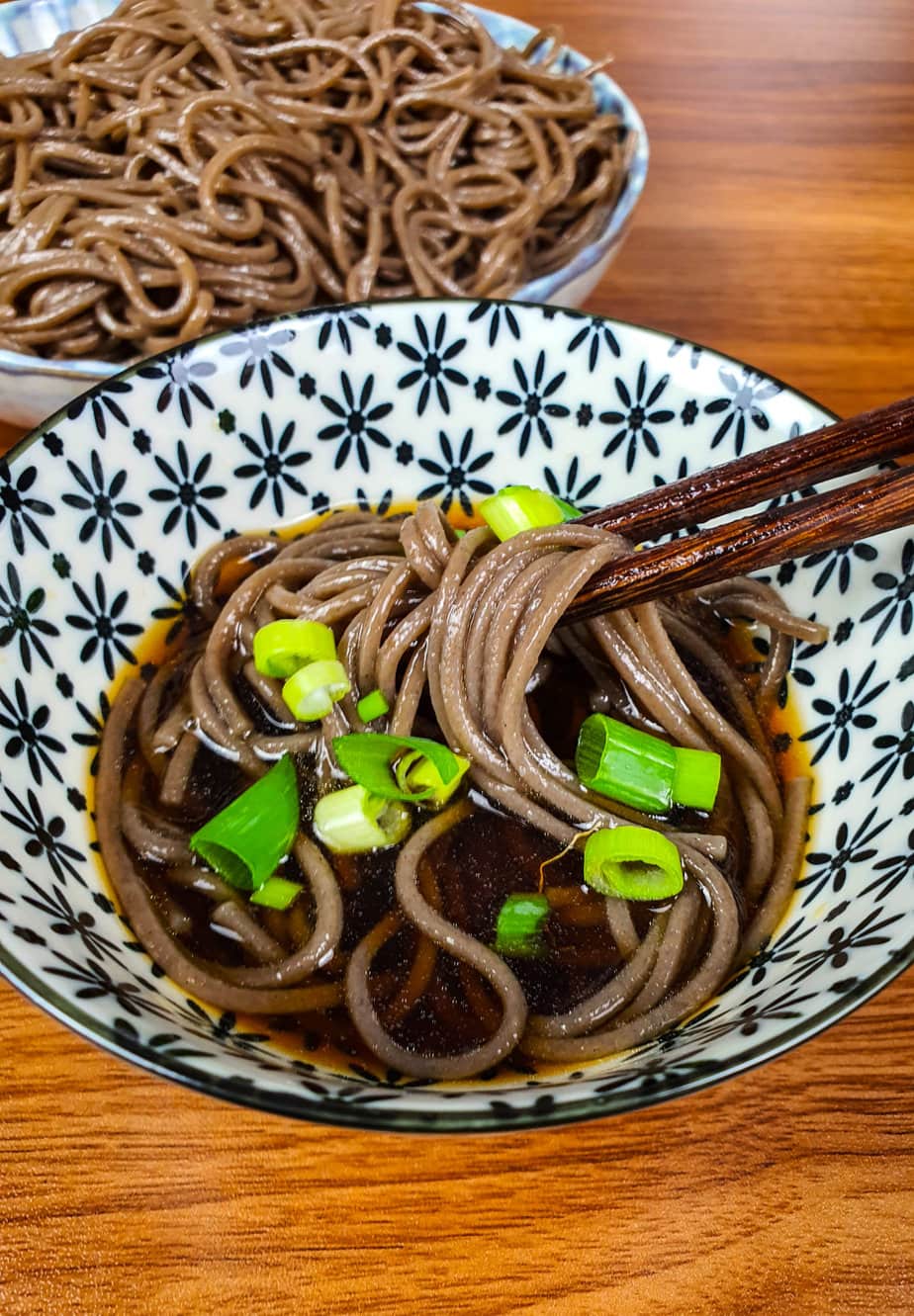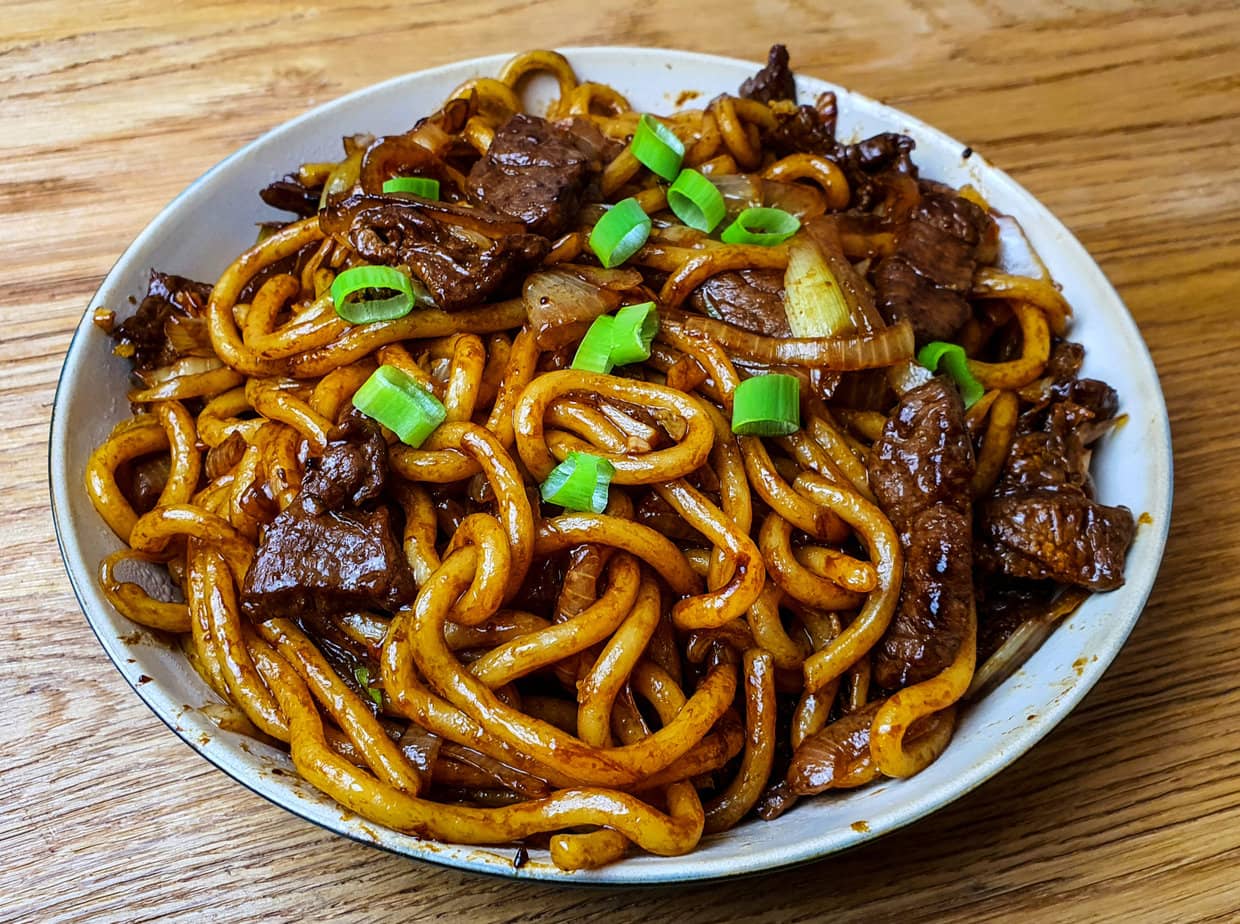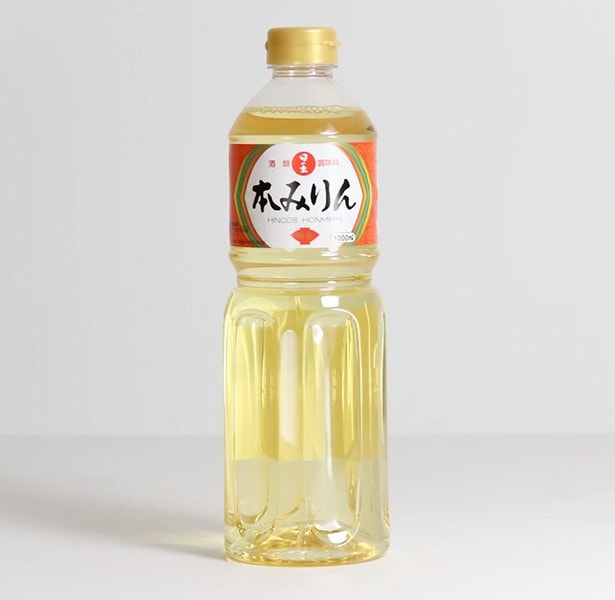What Is Mirin?
Mirin (pronounced “mirinne”, not “mirain” as in my cold soba video) is a type of Asian wine used as a condiment, which comes from Japanese cuisine. It’s quite similar to sake, but less alcoholic and sweeter.

To make mirin, cooked glutinous rice and cultured rice are fermented in a rice liquor, shochu, similar to vodka.
The mixture is left to rest for several months, allowing the liquid to obtain the famous slightly sweet “umami” flavor.
Origins of Mirin
Throughout its history, mirin hasn’t always been used as it is today. Initially, this rice wine was consumed like any other wine: it was an alcoholic beverage. Unlike Chinese Shaoxing wine, which is really not meant to be drunk.
Thanks to its pronounced and sweet taste, it began to be used to season dishes towards the end of the 17th century.
It gradually spread through Asian cuisines until 1950, when it really became popular, achieving the status of an essential condiment in Japanese cuisine.
Today, it is no longer consumed as a drink at all, but you can always show off your knowledge by offering it in shots at the end of a Japanese meal.
The Difference Between Mirin and Sake
As I mentioned earlier, mirin is quite similar to sake, but you shouldn’t interchange them, as they do have some differences!
Mirin, without necessarily containing more sugar than sake, has a sweeter taste due to a higher concentration. It doesn’t require much transformation in cooking, which makes it very convenient for sauces and glazes.

Conversely, sake is more alcoholic. So use it with caution in your recipes.
Quick tip: When cooking your preparation, add sake earlier than you would add mirin. This will allow more time for the alcohol to evaporate.
The Different Types of Mirin
Digging a little deeper, we can distinguish four types of mirin, which can also be ranked in this order:
“Hon mirin” (“authentic mirin”) follows the traditional recipe I described earlier. It has an alcohol content of 14%, which allows it to be preserved for several months outside the refrigerator.
This is the noblest mirin, but also the most expensive. (The one to offer in shots at the end of the meal to show off a bit)
Another mirin, often described as ordinary, is obtained by replacing shochu in the fermentation process with more traditional sake.
Aji mirin
(“salt mirin”) contains more salt than the others, as well as starch syrup. The advantage is that it avoids taxes on alcoholic goods, making it cheaper.
The disadvantage is that it gives it a higher salt content, which should be kept in mind for your recipes.
“Mirin fumi” (“mirin flavor”) is an industrial version of mirin. It is produced industrially and contains almost no alcohol.
This is the lowest quality mirin, but also the cheapest.
How to Replace Mirin
You had never heard of mirin before googling it and landing on this page? So you don’t have any in your kitchen, but it’s listed in the ingredients of your recipe?
There are alternatives to replace it, even if you’ll never get the original flavor of mirin.
As I told you, mirin is quite similar to sake, but it’s not an equivalent.
If you have sake, combine it with sugar to replace mirin (3 parts sake to 1 part sugar).
Similarly, you can mix a little sugar with rice vinegar to approximate mirin (in this case, 4 parts vinegar to 1 part sugar).
How to Use Mirin?
I often use mirin because it’s great for sweetening a dish. Depending on the food it accompanies, it can even help caramelize certain ingredients, giving them a beautiful golden glaze.
You can use mirin in all sorts of Japanese recipes: fish (narutomaki), seafood, ramen broth, salads… You can even go further and find a place for it in dipping sauces, classic sauces, marinades, dressings… I also use it in my yakitori chicken recipe

Last tip: wherever you use it, add mirin carefully. It has a fairly strong taste and could ruin your dish if you pour too much from the bottle…
Where to Buy Mirin?
Generally, you can find it in all Asian grocery stores and also in supermarkets, in the sushi section.
Alternatively, you can buy it on Amazon


